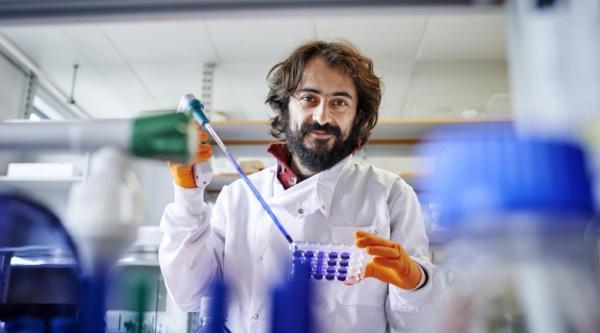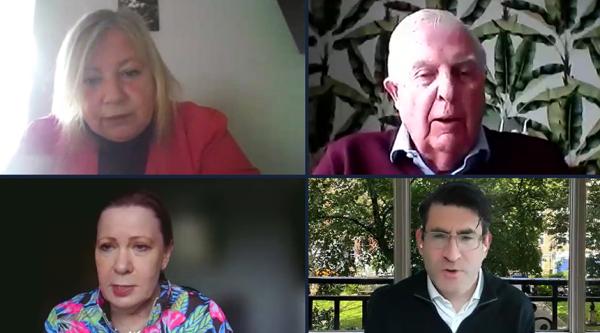Cognitive assessment could help us detect Alzheimer’s earlier
Read more about changing how we think about cognitive assessment could help us detect Alzheimer’s earlier.
Changing how we think about cognitive assessment could help us detect Alzheimer’s earlier.
The last decade has seen remarkable innovations in tests for Alzheimer’s disease, revealing biological changes in people with the condition 10 to 20 years before symptoms develop. Precise scans can now accurately measure shrinkage of important brain areas and measurements from spinal fluid can show changes in specific protein levels that indicate presence of the disease. Many of these innovations are now starting to make their way out of research centres, finding use in specialist clinical practice and drug trials.
Now researchers are keen for the field of cognitive assessment to catch up. The idea is to discover whether particular tasks can reveal subtle changes in thinking skills before clinical signs and symptoms emerge.
‘We are looking for ways to tease apart the cognitive decline of people embarking on the journey of Alzheimer’s disease from the changes that are part of normal ageing,’ says Dr Mario Parra, whose research focuses on how to improve cognitive assessment.
While revealing biological changes is incredibly informative, the critical test for any treatment is whether it improves thinking skills and daily function. Sensitive assessments of cognition – such as in memory, language and reasoning – are therefore essential for treatment trials. The recent trend in clinical trials for Alzheimer’s has been to give treatments at earlier stages of the disease. To establish whether these treatments are working, cognitive tasks that can monitor early changes are needed.
A task that could show who was experiencing normal ageing and who was in the very early stages of Alzheimer’s disease would also help with diagnosis. It could be given to people who are worried about their memory to find out whether they are likely to experience progressive symptoms that will require support and treatment.
A binding problem
At Heriot-Watt University in Edinburgh, Dr Parra is developing assessments to tackle this challenge. In collaboration with colleagues from the University of Edinburgh and overseas, the task he has created taps into a specific brain function – the ability to remember the combination of two features of an object.
Participants are shown a computer screen displaying objects of different colours and shapes. The screen goes blank and, after a delay of about a second, they’re shown objects that are either the same or different.
In one part of the task, only one feature can change between the original and second screens – for example, the shapes change but the same colours are used – and people with Alzheimer’s disease are usually able to identify this change. In another part, when the objects are different in the second screen, they have the same shapes as in the original but the colours have switched. It is this part, where the combination of features changes, that people with Alzheimer’s disease tend to find very difficult.
‘This ability to store the combination of features over a short time period is called short-term memory binding’ says Dr Parra. ‘It’s not memory in general that is affected very early in Alzheimer’s disease, it’s the ability to combine different parts’.
Studies have shown that this specific ability is affected in people who are worried about their memory, even when more traditional assessments don’t reveal any problems. They’ve also found that people who have a rare genetic mutation causing Alzheimer’s disease to develop at a young age have difficulty with the task before symptoms emerge.
Ticking all the boxes
Working with international collaborators, Dr Parra has shown that this ability is affected early in the disease. They have collected data from the UK, Columbia and Brazil to show that the task isn’t affected by age, education or culture. The team are now investigating the biological reasons why this task is affected at this stage of the disease’s development. They are also looking at how people’s performance on the task is related to biological markers for Alzheimer’s disease.
In addition, it’s important to establish whether the task can predict who will go on to develop further symptoms of Alzheimer’s disease and who will not. Data currently being collected with the same individuals over a number of years should reveal exactly that. ‘If we can tick all those boxes, we’ll have an Alzheimer’s disease-specific cognitive biomarker,’ says Dr Parra.
Crucial collaborations
So what does it take for research like this to succeed, and where will it go next?
Dr Parra says, ‘Important ingredients are collaborations and support. The international scientific community has become aware of this methodology, and people are now using it and replicating the findings which is very encouraging. It’s not just our lab, people in different settings are arriving at the same conclusions.
‘We’ll continue expanding our collaborating activity to make more people aware and invite them to use the tasks. The support we’ve had from Alzheimer’s Society enables us to continue expanding our network and refining the tasks into clinical tools.’
Not satisfied with detecting and monitoring memory changes in Alzheimer’s disease, Dr Parra is also setting up a team to use these insights to help people live well for longer. Studies such as the Alzheimer’s Society brain training trial have shown that cognitive training packages can help older people with daily activities.
Dr Parra wants to take a different approach, using computer science to create a virtual environment to simulate people’s own homes. In this environment, people with Alzheimer’s disease can practise everyday activities such as making a cup of tea or using the TV, and adjust the difficulty to meet their changing abilities while still posing enough challenges that can be overcome with practice. Having established a new Everyday Life Settings Lab at Heriot-Watt University, the team will trial a prototype next year.
Associations between the brain and behaviour
Dr Parra and his team use electroencephalography to record the brain's electrical activity.
This allows them to understand how changes in people's ability to do tasks relates to changes in the brain.








